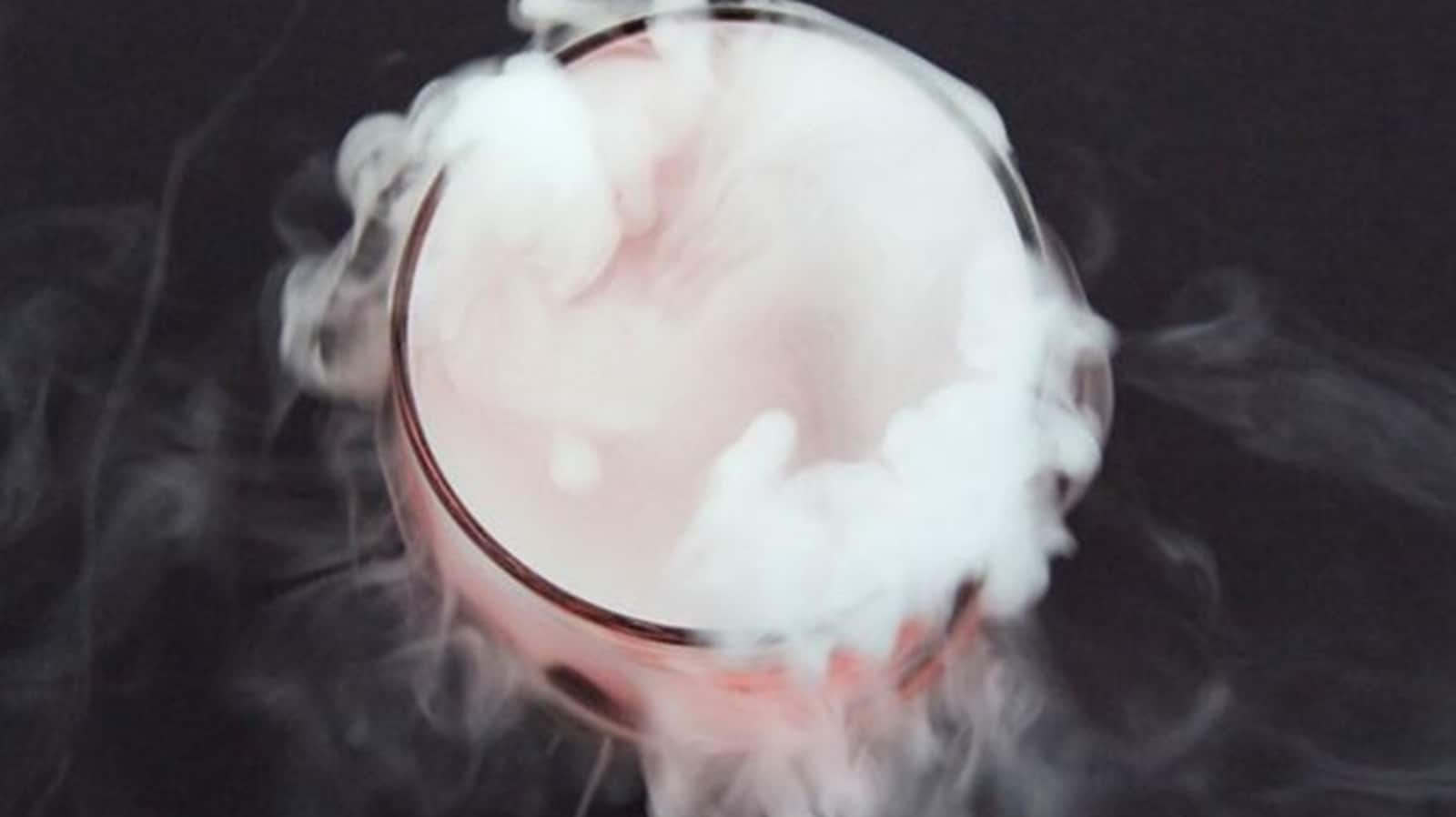
[ad_1]
Dry ice is the solid form of carbon dioxide (CO2) which is used to preserve food or create fog effect in theatre. With a temperature of about -78 degrees celsius which is much colder than freezing point of water, any kind of direct exposure – touching, inhalation, or consumption is associated with severe health risks. Recently, five people fell ill after they were served dry ice in a Gurgram cafe instead of a regular mouth freshener. After consuming it, they started spitting out blood and began to experience severe discomfort. (Also read: Gurugram cafe manager arrested after 5 friends serviced ‘dry ice’ in mouth freshener, vomited)

According to the Food Safety and Standards Authority of India (FSSAI), dry ice is used as a cooling agent for food products like ice cream, frozen desserts etc and is also used for food items that are needed to be cold or frozen, without the use of mechanical cooling.
If swallowed by mistake, dry ice can cause a health emergency, leading to issues like frostbite, breathlessness, burns to mouth, vomiting etc. It is important to act quicky during this time and patient must be given a cooling agent or antacid to relieve symptoms.
What is dry ice?
Dry ice is the solid form of carbon dioxide (CO2) at a temperature of -78.5°C. It is commonly used as a refrigerant, for creating smoke or fog effects in entertainment and theatre, and for preserving perishable items during shipping.
Dangers of dry ice
“Because of its extreme coldness and the possibility of carbon dioxide gas leakage, dry ice can be exceedingly dangerous if accidentally swallowed. Some potential negative consequences of eating dry ice are frostbite in which skin and tissue freeze resulting in necrosis. Tissue damage can be caused by direct contact with dry ice and symptoms like breathlessness, vomiting, burns to the mouth, esophagus, and gastrointestinal tract, bloating, pain in the abdomen, and possibly asphyxiation if the gas replaces oxygen in the blood are reported,” says Dr Ashutosh Shukla, Medical Advisor and Senior Director – Internal Medicine, Max Hospital, Gurugram.
“It is concerning to see incidents like the one at Laforestta Cafe in Gurugram. Dry ice and liquid nitrogen are not meant for consumption and can cause severe harm if ingested. It is crucial that restaurants prioritise the safety of their patrons by thoroughly vetting ingredients and adhering to strict safety protocols,” says Neelima Bisht, Chief Clinical Nutrition, Dietetics department, Paras Health Gurugram.
“Dry ice and liquid nitrogen are not meant for consumption and can cause severe harm if ingested. Dry ice, which is a solid form of carbon dioxide, can cause burns and internal injuries if it comes into contact with the skin or is ingested. Similarly, liquid nitrogen, while often used in fancy foods for its dramatic effect, can pose significant health risks if not handled correctly. Ingesting liquid nitrogen can lead to severe internal damage, including frostbite and tissue damage. Both dry ice and liquid nitrogen can cause vomiting, bleeding, and other severe health complications,” adds Bisht.
Preventing dangers of dry ice consumption
Dr Shukla says if dry ice is accidentally swallowed, it’s critical to act quickly.
- Seek medical attention right away
- Avoid forcing vomiting
- Patient should be given an antacid or cooling agent in such circumstances for prompt relief
- Additionally, we must stabilise the patient’s vitals
[ad_2]
Source link








